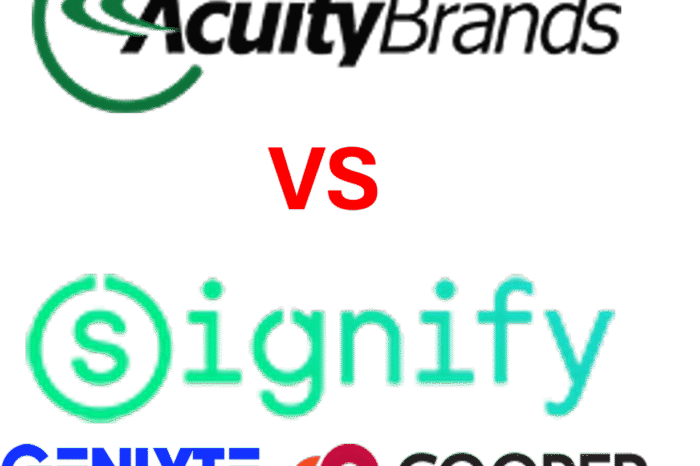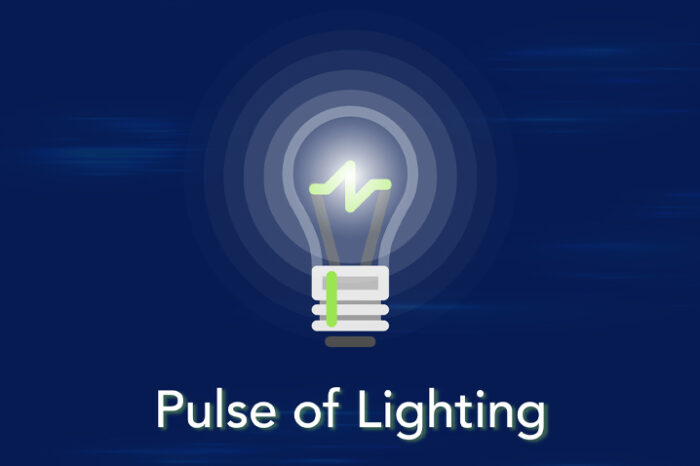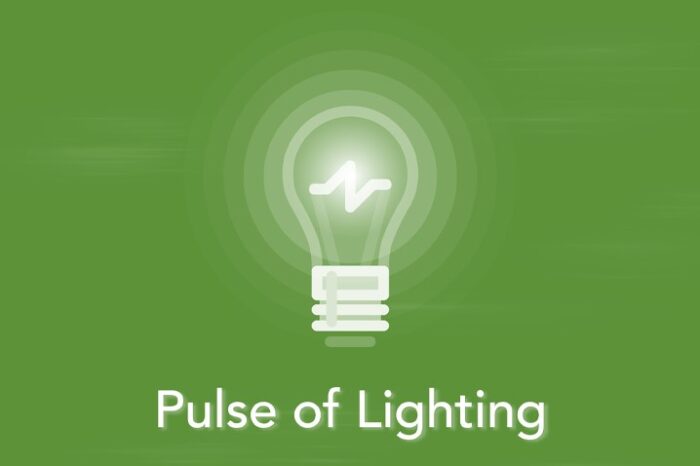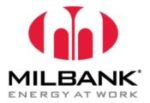Thinking About Acuity
The continued focus on energy efficiency powered by LEDs has fueled growth in the lighting market. For many distributors lighting now represents 30-40% of sales. And the lighting controls market has grown. For the past few years we’ve reviewed Acuity’s quarterly reports to get a sense of the market. As the industry leader, revenue-wise, they have been a proxy for this segment. Their recent earnings and revenue missed impacted their stock, but is it representative of a slowdown in the lighting industry or something else?
From their fiscal Q2 report
(and as regular readers know, italicized areas are ElectricalTrends’ comments)
- Results for Q2 reflect in large part continued softness and demand for certain short-cycle, small lighting projects – (this sounds like they are inferring that the renovation / small project market was softening. From speaking to distributors and other manufacturers, we weren’t able to qualitatively corroborate this which may indicate that some of this business, which is frequently viewed as “commodities” may be going somewhere else.)
- But they expect a rebound in the above market
- Sales were up 4% from prior year company-wide … 5% in the US and Canada (so they are seeing growth, just not what they projected … and they were only off $23.4M, which highlights the challenge in dealing with Wall Street. Close doesn’t count when expectations are set high. Distributors should be grateful they are not publicly held and having to report / meet quarterly projections.)
- Seeing lower pricing on luminaires (1%) due to lower component costs of LED fixtures.
- Mexico and Europe were down 1%.
- Think they continued to gain share (hence thinking others grew less than 3%)
- LED products are now 2/3rds of sales, inclusive of non-fixture sales
- Many new product introductions with more coming. A commonality is connectivity to their IoT platform (distributors who do not learn this segment and dedicate the appropriate resources could be left solely quoting in this area, hence leaving profitability and sales on the table by not being a demand creator.)
- Sales tied to their platform are estimated to be 12% of net sales for the quarter (generating significant dollars, and margin, given that sales were over $800M)
- Their “sensory growth platform” now encompasses over 500,000 LED light fixtures … enabling companies to consider new applications and functionality tied to “light”.
- Starting to position the company as a technology company (that just happens to make light fixtures rather than a lighting company offering some technology.)
- Have plenty of cash to deploy for acquisitions and investments. $463M in cash equivalents, borrowing capacity of $244M for a total of $707M with debt of only $356M. (very financially secure and can take advantage of opportunities.)
- They think a lighting slowdown started Q3 2016 (which is interesting as many distributors report that Q3/Q4 are good for lighting given the rush to complete projects / start renovations before budgets expire … the use it or lose it mentality.)
- They think softness could continue into the 2nd half of the year.
- Expecting low single digit North American growth in second half 2017
- Expect continued decline in LED component pricing but an increase in some other raw material and employee areas.
- Business mix is 70-75% project and 25% stock
- Large project business was up mid double digits (gaining specifications, a core competency of lighting agents whereas the smaller project market is not a core competency of many lighting agents. It then generates the question of “Is Acuity stronger with larger distributors who pursue larger contractors / new projects and perhaps they are not as strong with smaller distributors who may be servicing more of the smaller, light commercial construction renovations / re-lighting projects? And how is Acuity performing in the industrial market now that monies are being spent by those companies?)
- One analyst brought up the issue of distributors stocking less and increased competition from imports (which based upon our conversations, this is a significant trend, and the increased competition is also with companies selling direct. We’ve also heard of “value-engineering” for small projects. Consider all of the NEMRA reps who now have a lighting line with essentially “basic” fixtures. This business used to be the domain of lighting fixture companies.)
- Part of the reason, according to our interviews, is that distributor inventory is down due to the pace of product innovation / introductions and return policies that create obsolete product / excess inventory for distributors.
- Acuity thinks it will take share in the second half of the year (the question becomes, from whom … Eaton, Hubbell, Philips, Cree or will they be able to displace the myriad of smaller companies that are now in the market. From our conversations, Rab has taken share from “some people”)
- Think reason “small project” market is down is that companies are having a “wait and see” attitude regarding investment.
So, from a financial / Wall Street viewpoint, perhaps the stock was hit overly hard, however, there are a number of points that they bring up that may indicate some marketplace changes. Consider:
- Are they under-representing the issue of increased price competition?
- Are they missing that many contractors are less concerned about brand?
- Is the company more focused on large projects and IoT initiatives? Is the channel helping them drive this growth or being “accepting of the order”?
- Are lighting agents supportive of pursuing “less glamorous” opportunities … the renovation market and the smaller dollar projects?
- As distributors, is your lighting mix still 75/25 (project to stock)? Are you pushing for more turns on your stock business due to the pace of product innovation?
Essentially, is a segment of the lighting market changing on Acuity? Is the brand selling (of value) for the small project market?
So, what are you thinking about Acuity? What is your outlook for your lighting market?























